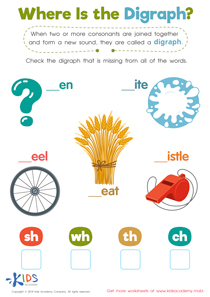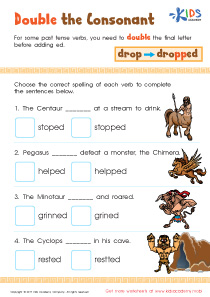Normal Consonant Blends Worksheets for Ages 4-6
5 filtered results
-
From - To
Discover engaging Normal Consonant Blends Worksheets for kids aged 4-6, designed to enhance early literacy skills! These worksheets provide a fun and interactive way for young learners to master consonant blends through a variety of exercises, including matching, filling in the blanks, and coloring activities. With vibrant illustrations and age-appropriate tasks, children will develop phonemic awareness while enjoying the learning process. Perfect for at-home practice or classroom use, these worksheets cater to different learning styles and help build a solid foundation for reading. Start your child’s journey to literacy with our thoughtfully crafted consonant blends activities today!
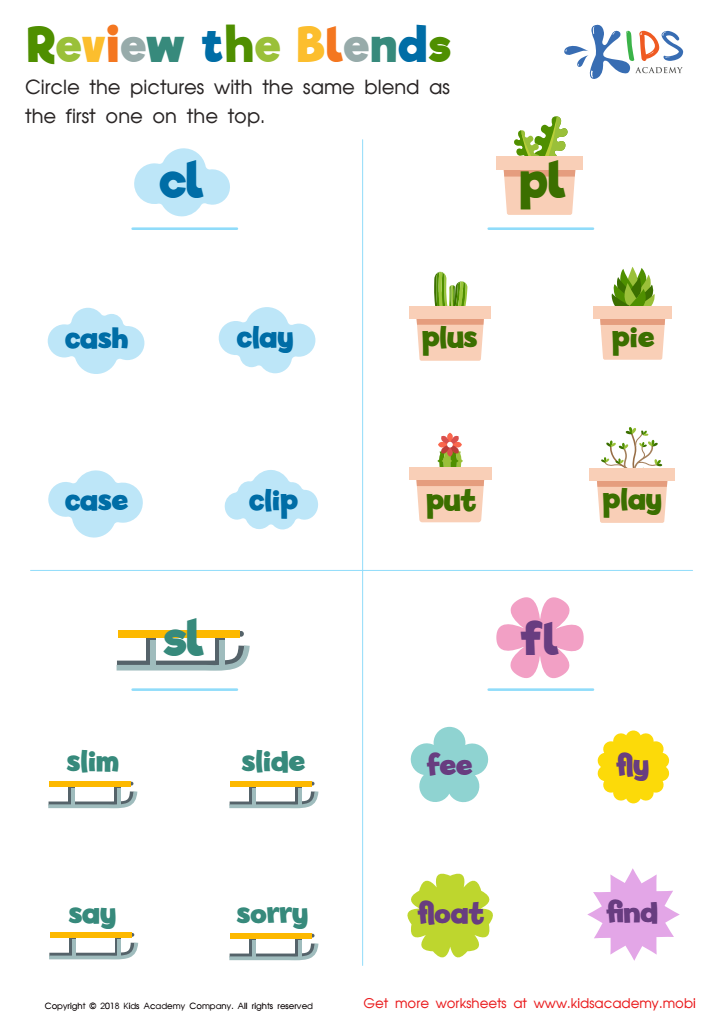

Review the Blends Worksheet
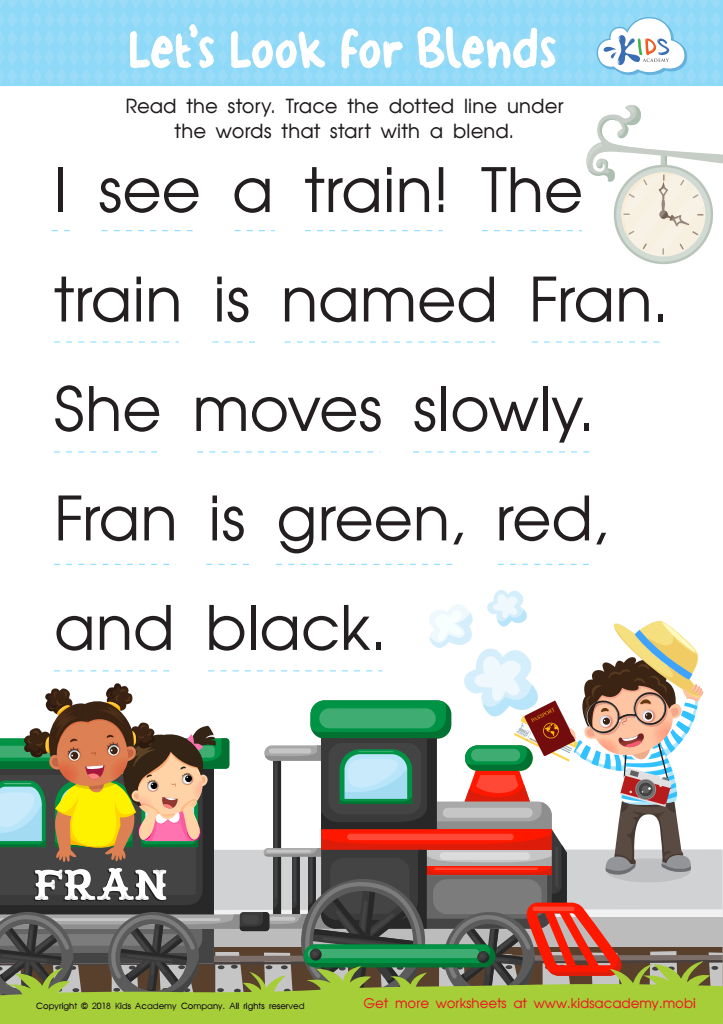

Let's Look for Blends Worksheet
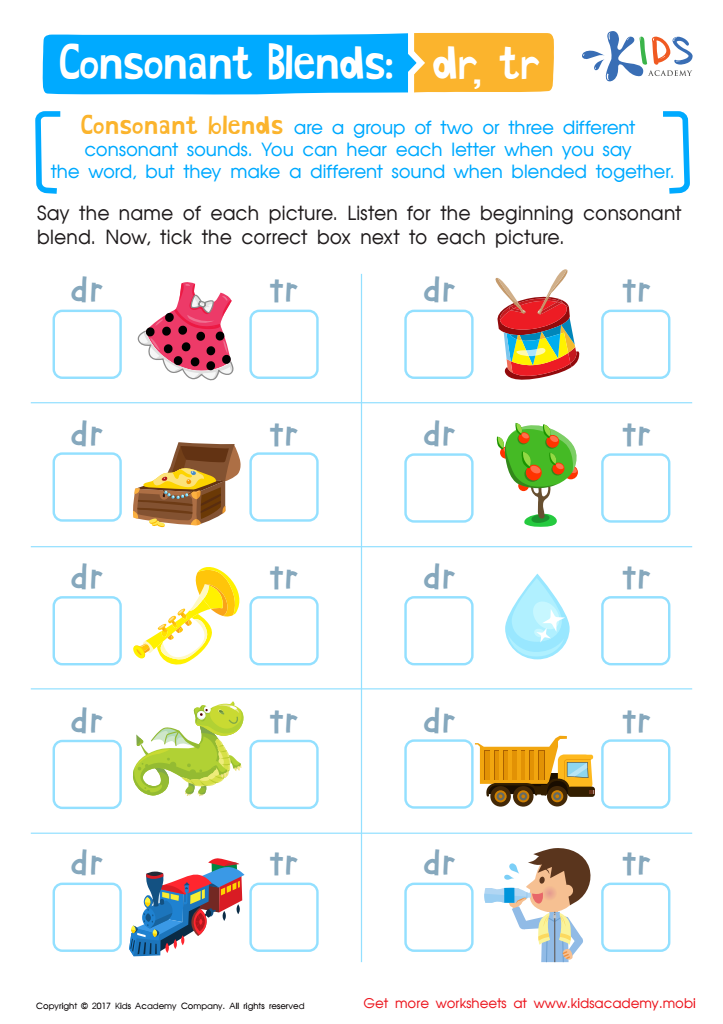

Consonant Blends: "Dr" and "Tr" Printable
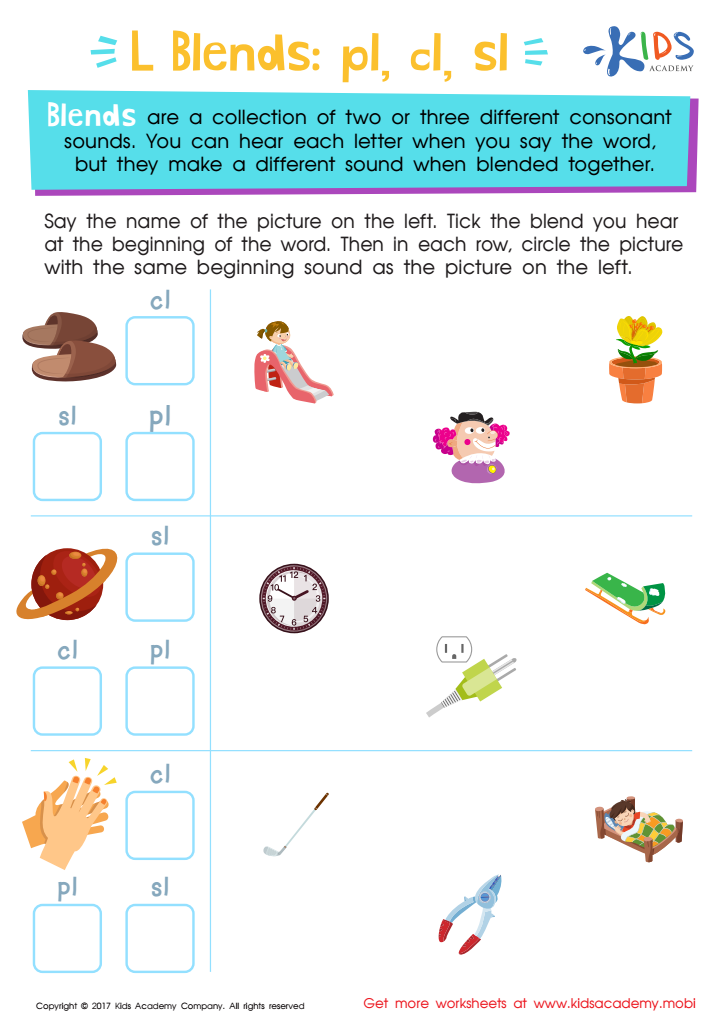

L Blends: "Pl", "Cl" and "Sl" Printable
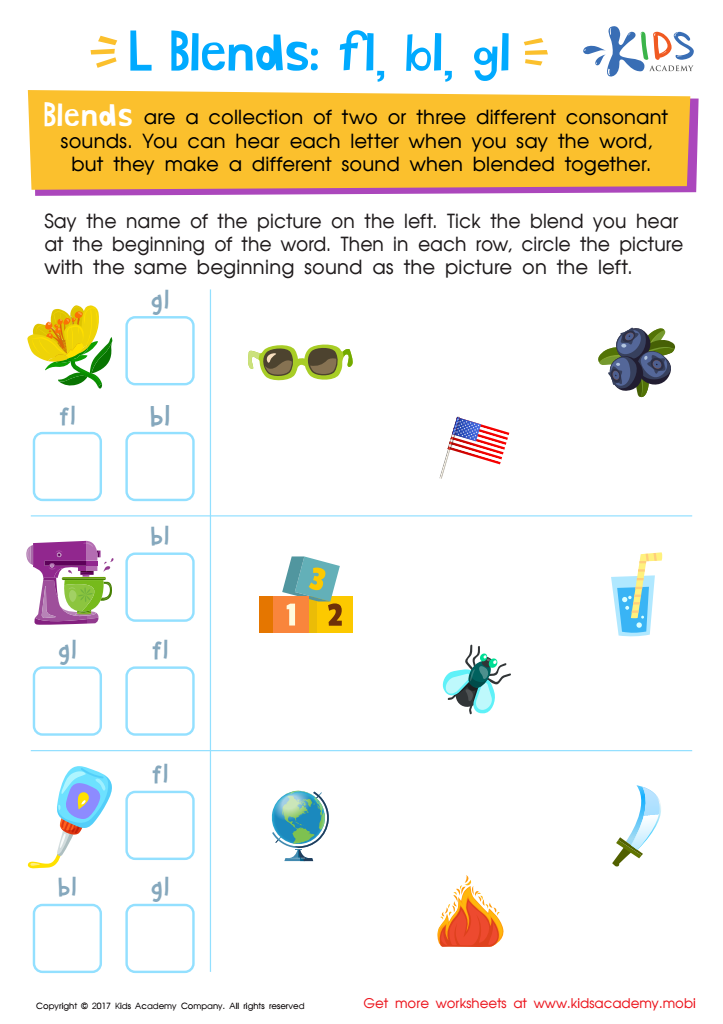

Blending Consonants: "Fl", "Bl" and "Gl" Printable
Parents and teachers should care about normal consonant blends for children ages 4-6 because these blends are foundational components of early literacy development. Consonant blends are combinations of two or more consonants that produce a distinct sound when uttered together, such as "br" in "brave" or "sn" in "snake." Teaching these blends is essential for several reasons.
Firstly, recognizing and pronouncing consonant blends enhances a child's phonemic awareness, which is critical for developing reading skills. Children who master blends can tackle more complex words, improving their reading fluency and comprehension. Secondly, understanding blends enriches vocabulary, enabling kids to decode and pronounce a broader range of words, thereby fostering a love for reading.
Additionally, learning consonant blends helps hone a child’s listening skills as they begin to distinguish subtle sounds in language. This not only aids in literacy but also supports overall language development. Engaging activities, such as rhymes and songs that emphasize consonant blends, make the learning process enjoyable and interactive. By prioritizing consonant blends, parents and teachers can empower children to build a strong foundation for lifelong literacy, ultimately setting the stage for academic success.
 Assign to My Students
Assign to My Students





